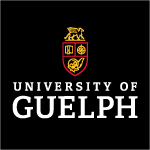Teaching
ENVS 2030 Meteorology and Climatology (Co-taught with Dr. Claudia Wagner-Riddle)
This course examines solar and terrestrial radiation; pressure systems and winds; atmospheric stability and vertical motions; air masses and fronts; clouds and precipitation; selected topics in applied meteorology including air pollution. The laboratory emphasizes the analysis and use of atmospheric data for solving environmental problems.
ENVS 4050 Predicting Impacts of Environmental Change
This course is focused on the effects of urbanization and pollutant and greenhouse gas emissions on local, regional and global climates and the subsequent impacts on human life. Students will develop and apply simple numerical models of atmospheric processes toward solving practical problems, including applications related to land-atmosphere exchange of heat and water, air quality, and assessment of thermal comfort in urban environments. Students will learn tools for analysis of global climate model data, preparing them to work directly with the data underlying projected future climates.
ENVS 6050 Micrometeorology
Exchanges of mass, momentum and energy between the surface and the atmosphere will be studied in the context of larger-scale meteorology. Diffusion and turbulence in and above plant canopies will be examined from theoretical and practical perspectives. Topics include time-series analysis, micrometeorological measurement theory, and basic principles of atmospheric science.
ENVS 6900 Research Seminar in Environmental Sciences (Co-taught with Drs. Paul Voroney, Jackie Goordial, and Simone Haerri)
This course provides information and training in scientific communications (oral and written) for thesis-based Environmental Sciences (ENVS) programs.
Past Courses
ENVS 3050 Microclimatology (Co-taught with Dr. Claudia Wagner-Riddle)
This course examines natural and intentionally-modified microclimates near the earth’s surface; energy budgets; transport of mass and heat.
ENVS 3340 Environmental Data Analysis (Co-taught with Dr. Genevieve Ali)
This course is focused on finding, collecting and interpreting data of the physical environment. Students will access various online databases, such as meteorological and hydrological time series, and perform and interpret statistical analysis with the data. Issues around calibration and data collection will be explored by performing calibrations and experiments. Students will make a numerical simulation of a dynamic environmental phenomenon. Students will learn to build and query a relational database with both qualitative and quantitative data.


